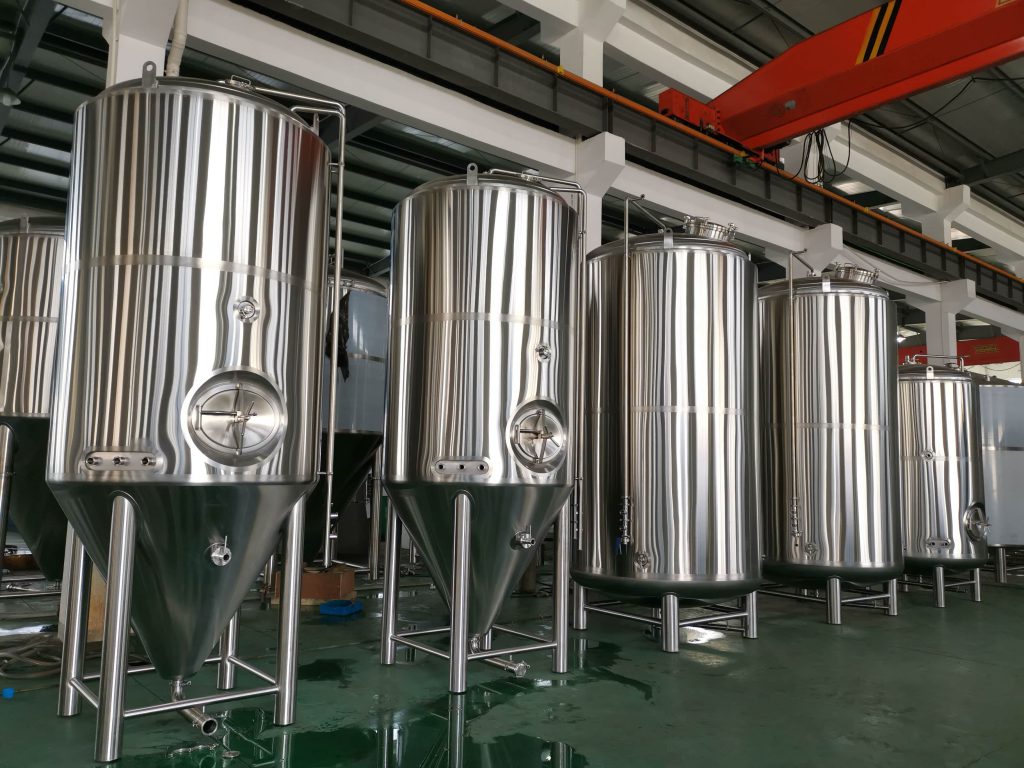Introduction

In the intricate world of brewing, yeast is a vital ingredient that plays a pivotal role in transforming simple ingredients into complex and flavorful beers. The process of brewery yeast propagation is essential for producing high-quality beer consistently. This article delves into the science of yeast propagation, the various types of yeast tanks used in brewing, and how these elements contribute to the brewing process.
The Role of Yeast in Brewing
Yeast is a microorganism that ferments sugars, producing alcohol and carbon dioxide as byproducts. This fermentation process not only contributes to the alcohol content but also enhances the flavor and aroma of the beer. There are several types of yeast used in brewing, each contributing differently depending on the beer style. The two main categories are ale yeasts and lager yeasts, with ale yeasts typically fermenting at warmer temperatures and lager yeasts at cooler temperatures.
Brewery Yeast Propagation: An Overview
Brewery yeast propagation refers to the process of growing yeast cells in a controlled environment to ensure a healthy and sufficient yeast population for brewing. This process is crucial for maintaining consistency and quality in beer production. The primary steps in yeast propagation include:
- Yeast Culturing: Initiating with a small amount of yeast, typically from a starter culture or a previous batch.
- Yeast Growth: Allowing the yeast to multiply in a controlled environment.
- Yeast Harvesting: Collecting the propagated yeast for use in fermentation.
The Science of Yeast Growth
Understanding the science behind yeast growth involves examining how yeast cells divide and thrive under specific conditions. Yeast cells reproduce asexually through budding, where a new cell forms from the parent cell. Key factors influencing yeast growth include:
- Temperature: Yeast growth is optimal within a specific temperature range. For ale yeasts, this is typically between 15-24°C (59-75°F), while lager yeasts prefer cooler temperatures around 7-13°C (45-55°F).
- Nutrients: Yeast requires nutrients such as nitrogen, phosphorus, and vitamins to grow and multiply. Insufficient nutrients can lead to poor fermentation performance.
- Oxygen: Initially, yeast needs oxygen to grow and multiply. However, once fermentation begins, oxygen levels should be minimized to avoid off-flavors and contamination.
Yeast Tanks: Types and Functions
Yeast tanks, also known as fermentation tanks, play a crucial role in the propagation and fermentation of yeast. There are several types of yeast tanks used in breweries, each serving a specific function:
Propagation Tanks
Propagation tanks are specialized vessels used to grow yeast from a small starter culture to a larger volume. They are typically designed with features such as temperature control, agitation, and aeration systems to optimize yeast growth.
Fermentation Tanks
Fermentation tanks are used for the actual fermentation process. These tanks are designed to maintain specific temperature ranges and often come with advanced control systems to manage pressure and carbonation levels.
Conditioning Tanks
After primary fermentation, beer is transferred to conditioning tanks, where it matures and develops its final flavor profile. These tanks allow for further fermentation, carbonation, and clarification.
Comparison of Yeast Tanks
| Tank Type | Purpose | Key Features |
|---|---|---|
| Propagation Tank | Yeast growth and propagation | Temperature control, aeration, agitation |
| Fermentation Tank | Primary fermentation | Temperature regulation, pressure control |
| Conditioning Tank | Maturation and clarification | Carbonation control, final flavor development |
Best Practices for Yeast Propagation
To ensure successful brewery yeast propagation, brewers should adhere to the following best practices:
- Start with Healthy Yeast: Use a viable and healthy yeast starter to avoid contamination and ensure robust fermentation.
- Maintain Sterility: Ensure that all equipment and tanks are properly sanitized to prevent contamination.
- Monitor Environmental Conditions: Keep a close eye on temperature, nutrient levels, and oxygen supply to promote optimal yeast growth.
- Regular Testing: Perform regular tests on yeast samples to monitor health and activity levels.
Common Challenges in Yeast Propagation

Yeast propagation can encounter several challenges, including:
- Contamination: Bacterial or wild yeast contamination can compromise yeast health and fermentation quality.
- Nutrient Deficiency: Lack of essential nutrients can lead to incomplete fermentation or sluggish yeast activity.
- Temperature Fluctuations: Inconsistent temperatures can affect yeast growth and fermentation performance.
Conclusion
The science behind brewery yeast propagation is a fascinating interplay of microbiology and brewing technology. By understanding the principles of yeast growth and utilizing appropriate yeast tanks, brewers can ensure the production of high-quality beer with consistent flavor and characteristics. Proper yeast propagation and management are essential for maintaining the integrity of the brewing process and achieving the desired outcomes in every batch.
FAQ
Q: What is the ideal temperature for yeast propagation?
A: The ideal temperature for yeast propagation depends on the yeast type. Ale yeasts generally thrive at 15-24°C (59-75°F), while lager yeasts prefer cooler temperatures of 7-13°C (45-55°F).
Q: How often should yeast be propagated in a brewery?
A: Yeast should be propagated based on the brewing schedule and batch sizes. Typically, yeast is propagated for each batch of beer to ensure a healthy and sufficient yeast population.
Q: What are the signs of yeast contamination?
A: Signs of yeast contamination include off-flavors, unusual odors, and slow or incomplete fermentation. Regular monitoring and testing can help identify and address contamination issues.
Q: Can yeast propagation be done on a small scale?
A: Yes, yeast propagation can be done on both small and large scales. Homebrewers often use small propagation methods, while commercial breweries use larger, more advanced systems.
Q: How long does yeast propagation take?
A: The duration of yeast propagation varies depending on the yeast strain and environmental conditions. Generally, it takes 24-48 hours to achieve a significant increase in yeast cell count.

